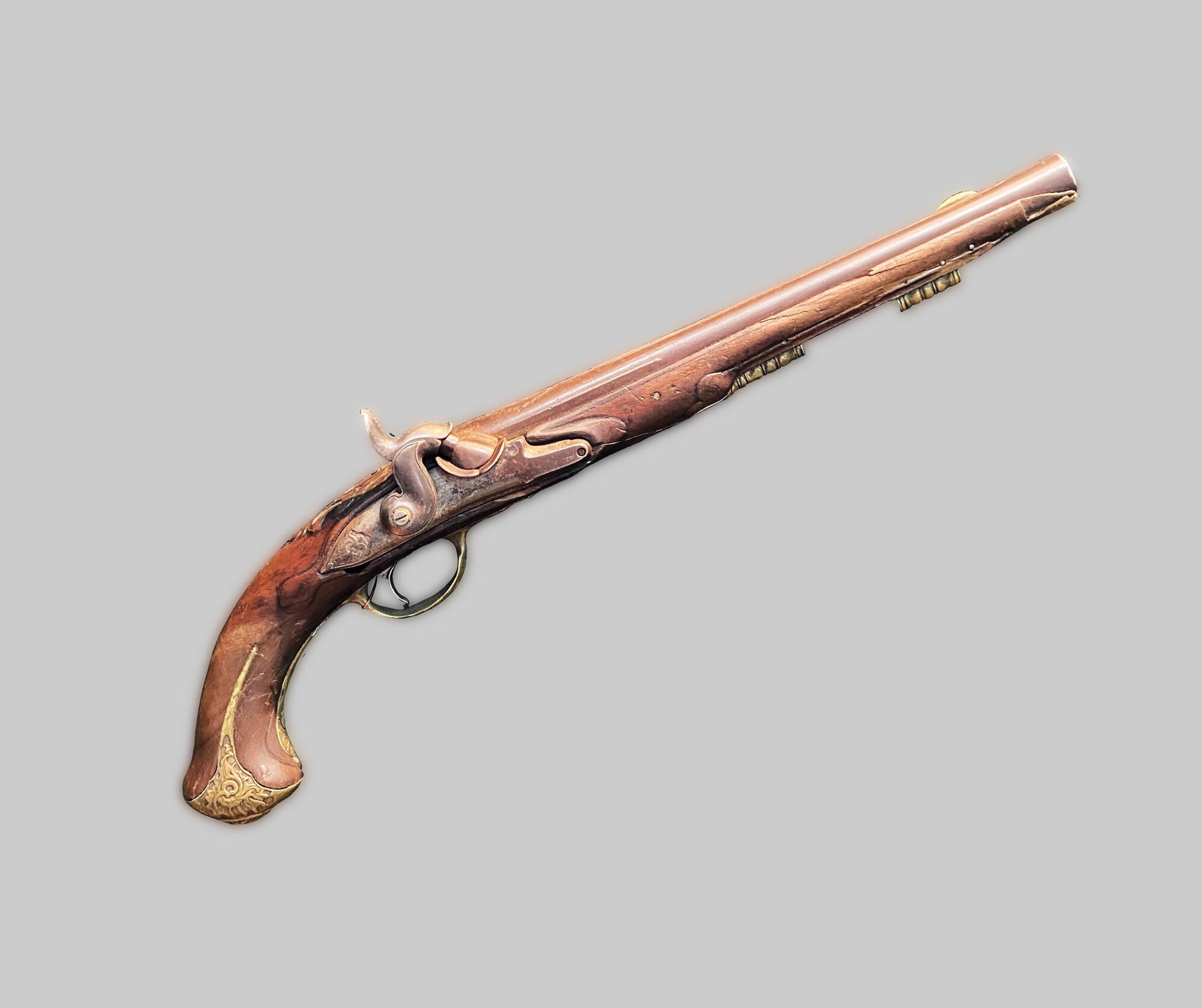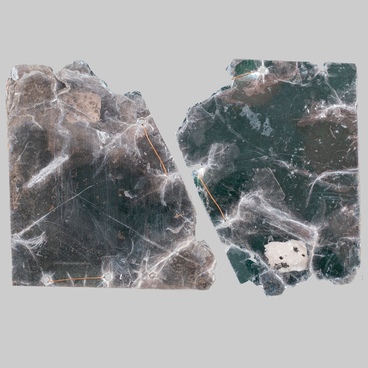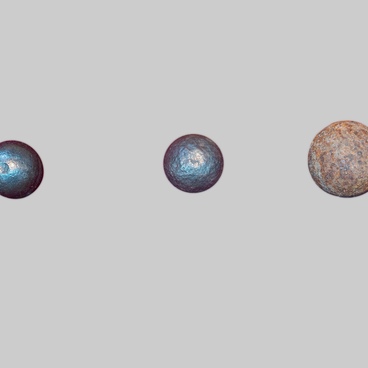The front-sight of the single-shot detonating pistol from the museum permanent exhibition is cast from bronze, and its components are decorated with floral ornament. Several techniques were applied while decorating the pistol: wood carving, engraving on iron and foundry on bronze plates.
Those pistols were muzzle-loaded. First, the powder was poured into the barrel and tamped with a ramrod. Then it was fixed there with a special insertion – a leather wad, a round lead bullet was pushed in and fixed with a second wad. After that, the powder was poured on the flash pan, and the pistol was ready for use. The same way the flint lock rifles were loaded, the difference was in the barrel length and caliber.
The detonating pistol was different from a flintlock one as instead of the flash pan it had a tube. A special priming element or detonator was inserted into it, detonated by impact. The system was more advanced than the flintlock one: such rifle could fire even in rainy weather and in a strong wind.
The percussion lock was simple, cheap and reliable. The trigger mechanism accurately followed the design of the flintlock one whose manufacture had been already mastered thus facilitating the transfer from one type of pistols to another. Initially, the detonators were an independent igniting element that replaced the black powder poured separately into the flash pan of the flintlock. They looked like the caps from soft metal, usually red copper or soft brass, with the percussion charge.
With depreciation of percussion locks remade from old flintlocks, the detonator lost its centering leaves and turned from an individual element into a component of the firearms cartridge.
By 1840-s, the percussion arms had superseded the flintlock arms in the armies of nearly all developed countries. The Russian soldier detonating pistol of 1848 was manufactured by Tula and Izhevsk arms plants. Muzzle-loaded detonating pistols had a metal ramrod fixed under the barrel at a special articulated suspension Such suspension was also installed in the cavalry pistols to prevent the loss of ramrod while riding a horse. Due to hinging, the cavalryman could easily load both barrels of the pistol with one ramrod.
Those pistols were muzzle-loaded. First, the powder was poured into the barrel and tamped with a ramrod. Then it was fixed there with a special insertion – a leather wad, a round lead bullet was pushed in and fixed with a second wad. After that, the powder was poured on the flash pan, and the pistol was ready for use. The same way the flint lock rifles were loaded, the difference was in the barrel length and caliber.
The detonating pistol was different from a flintlock one as instead of the flash pan it had a tube. A special priming element or detonator was inserted into it, detonated by impact. The system was more advanced than the flintlock one: such rifle could fire even in rainy weather and in a strong wind.
The percussion lock was simple, cheap and reliable. The trigger mechanism accurately followed the design of the flintlock one whose manufacture had been already mastered thus facilitating the transfer from one type of pistols to another. Initially, the detonators were an independent igniting element that replaced the black powder poured separately into the flash pan of the flintlock. They looked like the caps from soft metal, usually red copper or soft brass, with the percussion charge.
With depreciation of percussion locks remade from old flintlocks, the detonator lost its centering leaves and turned from an individual element into a component of the firearms cartridge.
By 1840-s, the percussion arms had superseded the flintlock arms in the armies of nearly all developed countries. The Russian soldier detonating pistol of 1848 was manufactured by Tula and Izhevsk arms plants. Muzzle-loaded detonating pistols had a metal ramrod fixed under the barrel at a special articulated suspension Such suspension was also installed in the cavalry pistols to prevent the loss of ramrod while riding a horse. Due to hinging, the cavalryman could easily load both barrels of the pistol with one ramrod.



